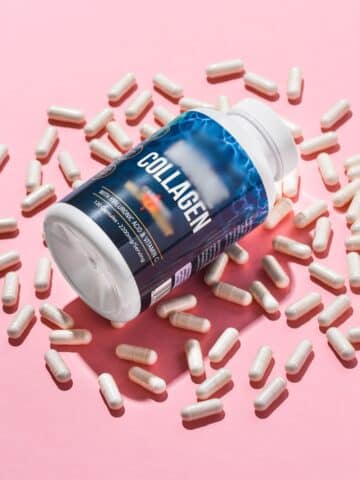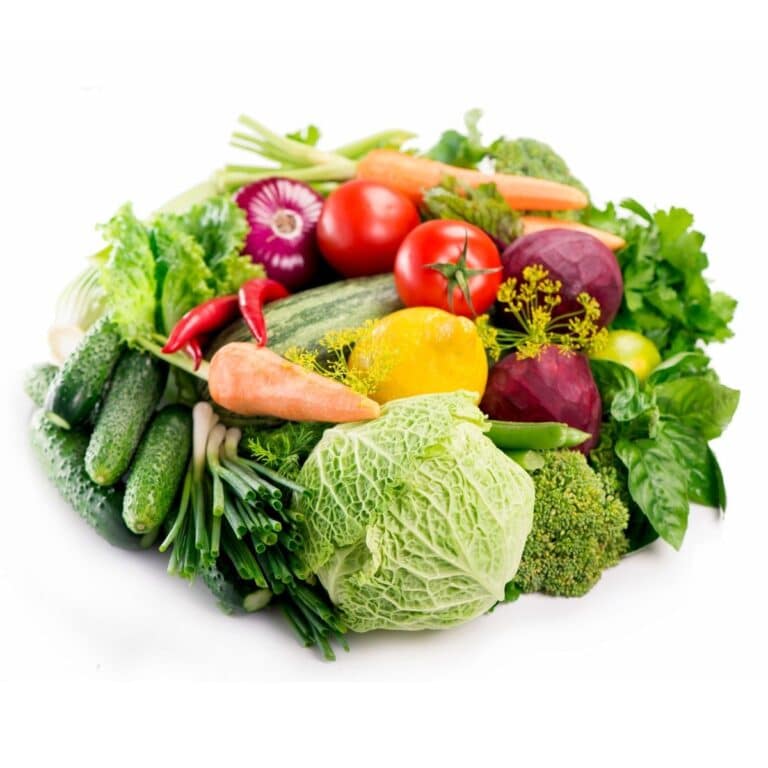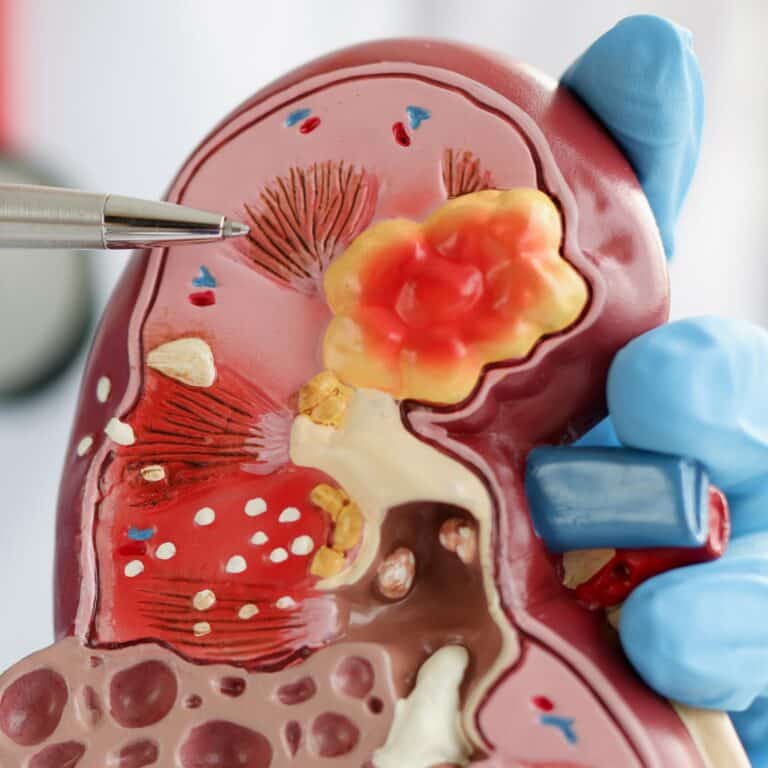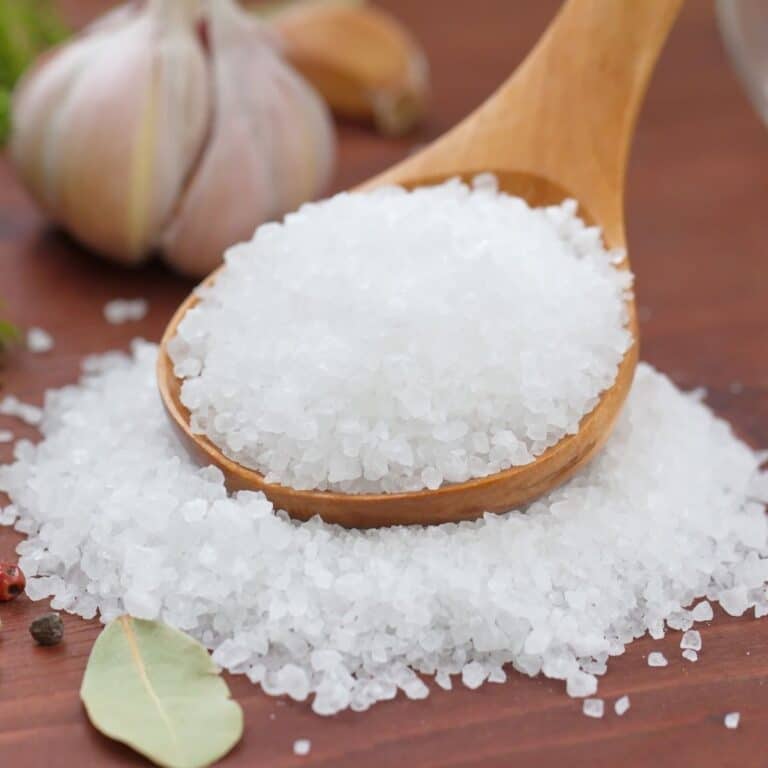Kidney Diet Recipes
You're in for a treat as you discover kidney-friendly recipes that not only keep your health in check but also delight your palate to make your Chronic Kidney Disease easier to handle.
Embrace the challenge with ease, as we guide you through low-sodium, high-fiber, and just-right protein meals.
With our help, you'll craft delicious dishes that support your dietary needs without skimping on flavor.

Get set to transform your renal diet into a journey of gastronomic joy, all while nurturing your body.
Let's cook up wellness together!
Jump to:
- Key Takeaways
- Understanding Kidney-Friendly Foods
- Low Sodium Recipe Essentials
- High Fiber Food Selections
- Choosing Healthy Proteins
- Fluid Management in Meals
- Overcoming Recipe Monotony
- Nutritional Balance Strategies
- Renal Diet Meal Planning
- Eating Out With Kidney Disease
- FAQs for Kidney Diet Recipes
- Kidney Diet Recipes You Need to Know About
Key Takeaways
- Kidney-healthy diet should consist of low salt, low fat, and low cholesterol, with an emphasis on fruits and vegetables.
- Consultation with a nephrologist and/or renal dietitian is essential for personalized advice on protein and fluid intake.
- Maintaining a healthy diet involves opting for low-sodium foods, increasing fiber intake, choosing low-fat dairy products, and consuming lean cuts of meat, chicken, and fish.
- Excessive sodium intake can contribute to high blood pressure and edema, and it is important to learn about low-sodium diets and access reliable resources for recipes and guidance.
For More Recipes and Ideas --->> Get Your Free Meals and Recipes That Are Perfect for Pre-Dialysis Diets, Pre-Dialysis with Diabetes, or Dialysis Diets.
Understanding Kidney-Friendly Foods
You'll want to select fruits and vegetables that are low in potassium, such as apples, berries, and green beans, to support your kidney health.
When it comes to proteins, it's essential to choose options that are both kidney-safe and suitable for your dietary needs, like fish, egg whites, and lean poultry.
Always consult with your healthcare provider to tailor these choices to your specific health condition and dietary requirements.
Identifying Low-Potassium Produce
In your journey to manage kidney health, it's crucial to choose fruits and vegetables that are low in potassium.
To maintain a balanced diet, you can create low potassium smoothies using apples, berries, or grapes. For snacks, consider options like rice cakes or unsalted popcorn. Satisfy your sweet tooth with low potassium desserts such as lemon jelly or apple pie made with a low potassium recipe.
When planning your meals, integrate low potassium meal ideas like boiled cauliflower, roasted bell peppers, and herbed chicken. Utilize low potassium cooking techniques, such as boiling or steaming, which can help reduce the potassium content in produce.
Always consult with your healthcare provider to tailor these suggestions to your specific needs, ensuring your diet supports your kidney health.
Choosing Kidney-Safe Proteins
While selecting proteins for your kidney diet, it's important to opt for sources that are lower in phosphorus and potassium to support your renal health. Here's how you can manage your protein intake wisely:
- Understanding Protein Requirements: Consult with your healthcare provider to determine your individual protein needs.
- Protein Substitutes: Consider protein-rich vegetarian options like tofu and legumes, which are often lower in unwanted minerals.
- Protein Cooking Techniques: Utilize methods like boiling or soaking to reduce potassium levels in certain foods.
- Protein Portion Control: Measure your servings to prevent overconsumption of proteins, which can be taxing on the kidneys.
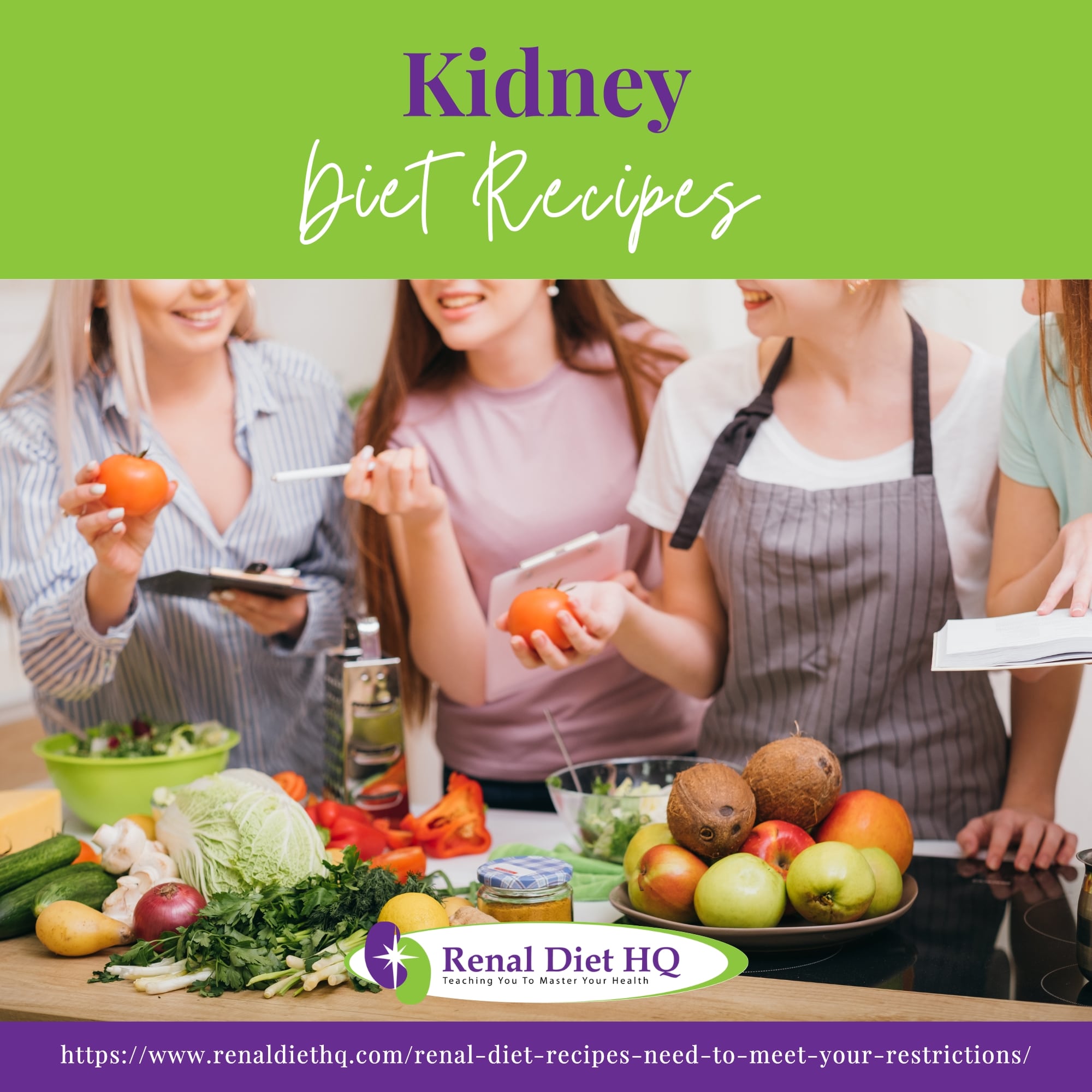
Low Sodium Recipe Essentials
You'll need to master alternative seasoning options to keep your kidney diet flavorful without the added sodium.
It's crucial to become adept at reading food labels, as many processed items sneak in high levels of salt.
Alternative Seasoning Options
Many common herbs and spices can enhance your meals' flavor without adding any sodium, making them crucial components of a kidney-healthy diet. When you're aiming to keep your meals tasty while reducing salt intake, consider these alternative seasoning options:
- Flavor Enhancing Herbs: Fresh or dried, herbs like oregano, basil, and thyme add a burst of flavor without the need for salt.
- Low Sodium Swaps: Use vinegar, lemon juice, or citrus zest to add tang and brightness to dishes.
- Spice Blends: Create your own salt-free spice mixes with garlic powder, paprika, and cumin for a robust taste.
- Umami Boosters: Incorporate mushrooms, ripe tomatoes, or nutritional yeast for a savory depth that mimics saltiness.
Reading Food Labels
Understanding food labels is essential when you're managing your sodium intake for a kidney-healthy diet. Labels reveal not only the amount of sodium per serving but also the levels of potassium and phosphorus, which you may need to monitor carefully.
Reducing potassium intake and managing phosphorus levels are key to maintaining your kidney health. Look for low cholesterol options to protect your heart, as cardiovascular health is crucial for individuals with kidney concerns.
Always check the serving size to ensure you're not overconsuming certain nutrients. Meal prepping tips often suggest planning ahead with these label insights in mind. By consistently reading food labels, you'll become adept at selecting ingredients that align with a kidney-friendly diet, ultimately fostering your well-being.
High Fiber Food Selections
When considering kidney-friendly recipes, it's important you include high-fiber foods to support your heart and digestive health.
However, you'll need to balance your fiber intake with your other dietary restrictions, as too much of certain types can affect your kidney function.
Always consult with your healthcare provider to tailor your diet with fiber-rich options that fit your specific needs.
Fiber-Rich Recipe Options
Incorporating several fiber-rich foods into your kidney-friendly diet can aid in managing cholesterol levels and maintaining digestive health. Understanding fiber's role is crucial as it supports gut health and can be included even in high fiber snacks and desserts.
Here's how you can integrate more fiber into your meals:
- Opt for whole grain toast topped with avocado for a fiber-packed breakfast or snack.
- Stir chia seeds into your yogurt or smoothie for a boost of fiber-rich goodness.
- Enjoy a bowl of berry salad, using kidney-friendly fruits, as a refreshing, fiber-rich dessert.
- Consider fiber supplementation with a renal dietitian's guidance to ensure you're meeting your needs without overdoing it.
These options can help you serve your body with the right nutrients while looking after your kidney health.
Balancing Fiber With Restrictions
You'll find that selecting high-fiber foods within your kidney diet's restrictions can enhance your digestive health without compromising renal function. Understanding fiber's role is crucial, as it aids in digestion and can help maintain a healthy heart. However, it's important to integrate fiber-rich meals that conform to your dietary restrictions.
Here's a visual guide to help with meal planning:
| Fiber Source | Consideration |
|---|---|
| Vegetables | Opt for low-potassium choices |
| Whole Grains | Select grains lower in phosphorus |
| Fruits | Choose those with less potassium |
| Legumes/Beans | Consume in moderation; watch portions |
Employ personalized strategies to ensure these options fit within your meal plan. Your dedication to serving yourself or others with kidney concerns will be well rewarded with a balanced diet.
Choosing Healthy Proteins
When selecting proteins for your kidney-friendly diet, it's crucial to focus on lean meats, which provide essential nutrients without excessive fat.
Incorporating plant-based proteins, such as lentils and chickpeas, can also support your health while managing kidney function.
Always tailor your choices to fit your specific nutritional needs, as advised by your healthcare team while dealing with Chronic Kidney Disease.
Lean Meat Selection
For your kidney-healthy diet, selecting lean meats such as poultry, fish, and certain cuts of beef and pork can provide the protein you need without excess fat and cholesterol. Here's how you can make informed choices:
- Understanding Portion Sizes: Aim for portions about the size of a deck of cards.
- Cooking Techniques: Grill, bake, or steam meats to avoid adding unnecessary fats.
- Meal Prep Tips: Prepare meats in advance and measure out servings to simplify your routine.
- Protein Alternatives and Flavor Enhancers: Consider beans, lentils, or tofu, and use herbs and spices instead of salt for flavor.
You'll find that with a bit of planning and creativity, managing your diet is both achievable and enjoyable.
Plant-Based Proteins
Incorporating plant protein sources into your kidney-friendly diet offers a nutritious alternative to animal proteins and can help manage your kidney health, regardless of the stage of kidney disease.
You'll find that protein alternatives like legumes, nuts, and seeds not only provide essential amino acids but also contribute to a more sustainable and compassionate lifestyle.
Vegetarian protein options, especially those low in potassium and phosphorus, are crucial for maintaining your kidney health.
Here's a table with protein-rich plant foods suitable for your kidney diet:
| Plant-Based Protein Source | Serving Size | Protein Content |
|---|---|---|
| Lentils | ½ cup | 9 grams |
| Chia Seeds | 2 tbsp | 4 grams |
| Almonds | ¼ cup | 6 grams |
Incorporate these into your plant-based protein recipes, ensuring you're serving both your health and your community with every meal.
Fluid Management in Meals
Managing your fluid intake is crucial when following a kidney-friendly diet. Too much fluid can lead to swelling and high blood pressure.
You'll need to balance hydration carefully. This means monitoring the amount of liquid used in cooking as well as what you drink throughout the day.
By adopting recipes that require less fluid, you can maintain flavor and nutrition without overloading on liquids. It's also important to prioritize moisture-rich fruits and vegetables. These can help keep you hydrated while providing essential vitamins and minerals.
Hydration Balance Tips
You'll need to carefully monitor your fluid intake as part of your kidney-friendly meal planning. Here are hydration balance tips to guide you:
- Understand Kidney-Friendly Foods: Limit foods that naturally contain a lot of water, such as soups and certain fruits and vegetables.
- Alternative Seasoning Options: Use herbs and spices instead of salt to flavor your meals, helping to reduce thirst.
- Reading Food Labels: Check for hidden sources of sodium and potassium that can contribute to fluid retention.
- High Fiber Food Selections: Incorporate foods like whole grains and legumes to help maintain bowel regularity, potentially reducing fluid build-up.
Adopting these practices will help manage your fluid levels effectively, essential for your kidney health and overall well-being.
Cooking With Less Fluid
To effectively manage your fluid intake, it's crucial to cook with less water and other liquids, using techniques that preserve flavor without adding excess fluid to your dishes. Embrace cooking techniques such as roasting and grilling, which don't require additional fluids. Portion control is also key; prepare meals that provide just enough to satisfy without leftovers that could tempt you to overconsume.
Incorporate flavor enhancers like herbs and spices, which add zest without the need for liquids. Meal prepping can help you monitor your fluid intake throughout the week. Lastly, choose the right cooking equipment, like non-stick pans that require less oil or water for cooking.
| Cooking Technique | Fluid Management Benefit |
|---|---|
| Roasting | Reduces need for liquids |
| Grilling | No extra fluid necessary |
| Herbs/Spices | Enhance flavor sans water |
| Meal Prepping | Controls fluid portions |
| Non-stick Pans | Lessens oil/water use |

Overcoming Recipe Monotony
You might feel stuck in a rut with your kidney-friendly diet, but there's a world of flavors waiting for you.
By incorporating creative cooking swaps and exploring global cuisines, you can enjoy a diverse range of meals that adhere to your nutritional needs.
Always remember to check with your renal dietitian to ensure these new recipes fit within your personalized dietary guidelines.
Creative Cooking Swaps
Amidst the dietary limitations of a kidney-healthy diet, you can keep your meals exciting by incorporating creative cooking swaps that introduce new flavors without added sodium or phosphorus. Here are some strategies:
- Understanding Portion Control: Use smaller plates to naturally reduce portion sizes and manage phosphorus intake.
- Low Phosphorus Alternatives: Choose rice milk or almond milk over cow's milk for lower phosphorus content.
- Creative Seasoning Ideas: Experiment with a blend of sodium-free spices to enhance taste without risking health.
- Incorporating Herbs and Spices: Fresh herbs like cilantro or parsley can add a burst of flavor, allowing you to skip the salt shaker.
Exploring Global Cuisines
While you're mastering portion control and experimenting with low-phosphorus alternatives, don't hesitate to broaden your culinary horizons by delving into global cuisines that cater to kidney-friendly diets. Exploring cultural flavors can invigorate your meal plan with international recipe inspiration, ensuring you're not just nourishing your body but also your spirit.
When you're looking for a change, start by incorporating kidney safe spices that can transform a dish without adding harmful sodium. Consider traditional dishes modification by using global ingredient substitutions that align with your dietary needs.
For example, switch out high-potassium tomatoes for bell peppers in salsas or sauces. You'll maintain the zest while adhering to health guidelines.
Nutritional Balance Strategies
To manage your kidney health effectively, it's crucial to embrace a diverse selection of foods that meet your nutritional needs without overburdening your kidneys.
Collaborating with a dietitian ensures your meal plan is tailored to your unique health profile, incorporating the right balance of nutrients.
This strategic approach can help you enjoy a variety of tasty meals while adhering to your dietary restrictions.
Diverse Food Selection
You'll find that variety in your meals not only keeps your taste buds happy, but also helps you maintain nutritional balance within the constraints of a kidney-healthy diet.
When you're cooking for a family or yourself, it's essential to integrate:
- Understanding portion sizes to prevent overconsumption of certain nutrients.
- Incorporating kidney safe snacks to satisfy hunger between meals.
- Utilizing meal prep tips to ease daily cooking stress and ensure diet adherence.
- Managing cravings by finding suitable alternatives that align with your dietary needs.
This approach is about more than just following a diet; it's about crafting a lifestyle that supports your health and caters to everyone at the table.
Renal Diet Meal Planning
When planning your renal diet meals, it's crucial to tailor your menu to your specific health needs. You'll need to balance your intake of sodium, potassium, and phosphorus carefully, while ensuring adequate protein based on your nephrologist's advice.
Working with a renal dietitian can help create a meal plan that's both nutritious and varied, keeping your kidney health in check.
Personalized Meal Strategies
To create an effective renal diet meal plan, you need to tailor your food choices to your specific health requirements, which may include restrictions on certain nutrients like sodium, potassium, and protein. Here are steps to help you manage:
- Understanding Portion Sizes: Grasp the recommended amounts of foods to maintain nutrient balance.
- Incorporating Herbs and Spices: Enhance flavor without adding sodium or potassium.
- Meal Prep Tips: Plan and prepare meals ahead to ensure diet adherence.
- Managing Fluid Intake: Monitor and adjust your fluid consumption as needed.
Focus on satisfying snack ideas that fit within your dietary limits to curb hunger without compromising your health plan.
Balancing Nutrients Carefully
You'll need to balance your nutrients meticulously when planning your renal diet to meet your health needs without overstepping any dietary boundaries. Understanding nutrient restrictions is essential, phosphorus, potassium, sodium, and protein levels must be managed carefully. Your meal planning strategies should center on these limitations, ensuring that each dish contributes to a harmonious nutritional profile.
Explore cooking techniques that retain flavor without adding forbidden ingredients. Utilize recipe modification tips to transform traditional meals into kidney-friendly versions. For instance, when reducing sodium, consider ingredient substitutions like herbs and spices to enhance taste.
Patient-tailored advice from a dietitian will guide you in making informed choices, helping you serve your body the best possible meals while adhering to a renal diet.
Eating Out With Kidney Disease
When you're managing kidney disease, eating out can be a challenge. But with the right strategies, you can enjoy restaurant meals without compromising your health.
It's essential to look for kidney-friendly menu options that are low in sodium, potassium, and phosphorus. Always discuss your meal choices with your renal dietitian to ensure they fit within your personalized nutritional guidelines.
Restaurant Meal Tips
Navigating restaurant menus often requires diligence if you're managing kidney disease, as you'll need to make choices that align with a kidney-healthy diet. Here are four tips to consider:
- Understanding Portion Control: Ask for half-portions or share a meal to manage serving sizes.
- Reducing Phosphorus Intake: Opt for dishes with less dairy and processed ingredients.
- Cooking for One Person: When eating alone, choose simple, a la carte items to avoid overeating.
- Vegetarian Meal Options: Seek out plant-based dishes, which can be lower in protein and phosphorus.
Kidney-Friendly Menu Choices
Making kidney-friendly menu choices is essential to managing your condition while dining out. You'll need to navigate the menu with a keen understanding of sodium intake, looking for dishes that are low in salt to prevent fluid retention and high blood pressure.
When it comes to managing phosphorus levels, opt for meals that avoid excessive dairy and nuts. Exploring low sugar options is also key, especially in beverages and main courses, to maintain your blood sugar levels.
Incorporate healthy fats by choosing dishes with unsaturated fats like olive oil or avocado.
FAQs for Kidney Diet Recipes
To make your family's recipes kidney-friendly, you'll want to tweak a few things.
Use salt substitutes to flavor dishes while managing sodium levels.
Adjust protein portions based on your needs, and consider gentler cooking methods that preserve nutrients.
Monitor fluid intake by measuring liquids used in recipes.
These changes ensure you're serving meals that are both delicious and health-conscious.
To manage hunger and portion sizes, start with mindful eating, pay attention to your body's satiety signals.
Use smaller plates, they'll help you feel satisfied with less.
Stay focused on hydration, as drinking water can reduce hunger.
Plan your meals in advance to ensure they're nutrient-rich and in line with your dietary needs.
Preparing helps you resist the temptation to overeat and maintains your commitment to serving your health.
You can still savor desserts by using sugar alternatives and opting for fruit-based treats that are low in potassium.
Modify recipes by incorporating dairy substitutes and focusing on phosphorus control to meet your renal diet needs.
It's essential to tailor these treats to your nutritional requirements, ensuring they complement your health goals.
When serving others, choose options that align with their dietary needs, offering a sweet experience without compromising kidney care.
Kidney Diet Recipes You Need to Know About
You've now got the tools to craft kidney-friendly meals that are as tasty as they're healthy. Remember to choose low-sodium, high-fiber, and proper protein options that align with your body's needs. Stay vigilant with fluid intake, and keep meals interesting with varied recipes.
Balance is key, so consult your dietitian for a personalized plan. Dining out? No problem. Just stick to your guidelines. Embrace this culinary adventure and enjoy every kidney-safe bite!




